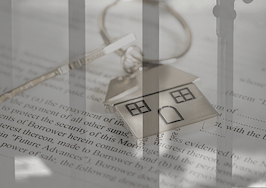Lew Sichelman is a seasoned writer with 50 years of covering the housing and mortgage markets under his belt. His biweekly Inman column publishes on Tuesdays.
In one of the most worrisome — perhaps even scathing statements yet about housing affordability — a new report says 90 percent of the new houses being built today can be purchased by just 10 percent of American households.
“Whether we want to look at it or not,” the latest edition of Emerging Trends in Real Estate says caustically, “housing is a mess and getting worse, not better.”
The report’s co-author, Andrew Warren, director of real estate research at the PwC consulting company (formerly Price Waterhouse Coopers), put it even more succinctly. “We don’t have the right amount of housing at the right cost,” he told reporters at a press briefing at the Urban Land Institute’s fall meeting in Washington late last month.
Despite what the report calls “a reservoir of optimism out there,” it also says “the signs are there for anyone to see.” But the signs of a solution “are not.”
Even in markets that heretofore have boasted of the low cost of housing, the report says, housing prices have “so far outstripped household incomes that affordability has reached the breaking point.”
The report was produced jointly by the Urban Land Institute and PwC. With more than 45,000 members worldwide, the Urban Land Institute is a non-profit education and research group that aims to provide leadership in responsible land use.
Lack of affordable housing impacting local economies
The lack of affordable houses is not only having a profound impact on homebuyers and sellers. It is also discouraging employers who might be considering a move to places where there is simply not enough lower-priced houses for their workers, according to the people who were interviewed for the report or who participated in focus groups.
Almost universally, the report says, they described housing conditions in their areas as “challenging.”
The affordability issue is a given in high cost coastal markets such as Boston, San Francisco, Los Angeles and Washington, D.C. But it also is a problem in towns like Cleveland, Detroit and Jacksonville.
Said a participant from Charlotte, “single-family, for-sale housing has been in decline due to cost.” Added another responder, this one from Huntsville, Alabama: “We’re missing affordable housing.”
Ditto a third from Austin, who said the housing stock in his Texas city “is not diverse enough.”
In a recent report by the National Association of Realtors, Chief Economist Lawrence Yun also noted the supply side problem.
While builders are putting up more spec homes and at lower price points, where the demand remains the strongest, he said they must pick up the pace.
“Home building needs to increase robustly to address the inventory shortage,” he wrote.
Builders building fewer affordable homes
And a new report from John Burns Real Estate Consulting pointed out that 14 years ago, construction in the top 10 markets totaled 394,000 single-family homes. Today, those markets are building 54 percent fewer homes.
Atlanta builders are building 36,000 fewer homes than in 2005, and Phoenix builders are building 37,000 fewer, the Irvine, California-based advisory firm reported. And Chicago has plummeted from the seventh largest single-family housing market in the country to the 32nd.
Senior Vice President Erik Franks said that while there is a strong demand for houses, most of it is below where builders price their wares.
“In 2003, before subprime lenders broke the rules, half of the new homes in the country were priced below $191,000,” he said. “Today, half of new homes are priced above $313,000, and 15 of the 18 largest publicly traded home builders sport an average sales price north of $365,000.”
Why is this happening?
Many factors contribute to the affordability problem, and many on the supply side of the equation have been well documented. The cost of land, labor and materials have all accelerated well beyond the level of inflation and the increase in nominal incomes.
But at the press briefing to release the Urban Land Institute report, Mitch Rochelle, a partner at PwC, said “the elephant in the room” is the absence of the tax deductions for state and local tax deductions. Those key write-offs were eliminated by the Tax Cuts and Jobs Act of 2018.
“It’s the single biggest thing that has turned the housing market on its side,” said Rochelle, a New Jersey resident, adding that people are leaving his high-tax state and buying elsewhere or moving into a rental property.
Economist Ken Rosen, an Urban Land Institute trustee and chairman of Rosen Consulting, a Northern California advisory firm, agreed, but added that the $1.7 trillion is outstanding student debt also is having a profound impact on people’s ability to swing buying a house.
Tax deductions matter, said Rosen, who also is chairman of the Fisher Center for Real Estate and Urban Economics at the University of California Berkeley. But many would-be buyers are carrying so much student debt that they can’t qualify for a mortgage.
According to another report released last month, student loan borrowers who earned bachelor’s degrees in 2018 had an average debt of $29,200, up 2 percent from their peers in the class of 2017. The Institute for College Access & Success said in its annual student debt study that nearly two-thirds of last year’s college grads had taken out student loans.
To combat affordability issues, the Urban Land Institute report noted, some large employers are taking matters into their own hands. The report cites Microsoft as one such company. The tech giant has undertaken a $500 million investment to spur housing development throughout the Puget Sound region.
Elsewhere, though, local jurisdictions have turned to rent control so tenants who cannot afford to buy aren’t forced out of their apartments. Oregon, for example, passed a statewide rent control measure earlier this year.
But according to the report, measures like Oregon’s sometimes cause investors to step back from new projects. “Most in the real estate industry regard rent regulation unfavorably,” it says.
As the name of the report a suggests, one emerging trend of interest to the housing sector is the climb of what it calls “Hipsturbia,” which is defined as the extension of the live-work-play model to the suburbs.
Emerging Trends first began to discuss the concept of a 24-hour city a quarter-century ago, and it has proved itself time and time again. Now, many suburban communities are trying to emulate the idea. “Success has a way of spreading,” the report points out.
Brooklyn could be the prototype for the concept, it says. In fact, it is no longer a borough of New York City, at least figuratively, but a market all its own. And now many other places — Hoboken, New Jersey, Santa Clara, California, Evanston, Illinois, and Tempe, Arizona, to name a few — are taking a shot at attracting people to hip, mixed-use walkable developments
The number of imitators are sure to multiply, the report maintains, keeping the trend going.
Lew Sichelman is a seasoned writer with 50 years of covering the housing and mortgage markets under his belt. His biweekly Inman column publishes on Tuesdays.













